Khadim Pak is a fudge made using grated fresh coconut and mawa/milk solids. Going by this short description one would say it is a Kopra Pak so why not call it so?? I would say it is a mind blowing version of Kopra Pak. Seriously, that good!! Lip smacking good. I seldom get blown away by the taste of a deshi sweets but this was different molten, chewy, nutty with the right amount of texture and bite. Another thing I seldom do in my kitchen is make mawa from scratch but I was determined to replicate the recipe of Khadim Pak in my kitchen and that too from scratch!!
Khadim Pak gets its name from the person who first made it and seems to have originated from the coastal town of Mangrol in Junagadh, a historic region known for its fauna, flora and valor. Junagadh, the land of Asiatic Lions, Gir Cows, historic remnants, kesar mangoes, lush coastal belt and enterprising people. Khadim Pak is an outcome of the fresh produce this land offers. The Gir Cow is believed to be amongst the best indigenous cow breeds of our country and it is believed that its milk not only nourishes but prevents lots of health issues. The coastal stretch of Mangrol and Chorwad are lush with thick growth of coconut palms. Miles and miles of chikoo and mangoes orchards trail us as we drive through the country side.
The two hero ingredients of Khadim Pak are mawa and fresh coconut. The milk is boiled until it thickens after with fresh coconut and sugar are added and cooked until everything takes a pale brown color. The trio tastes decadently rich by itself hence flavoring it with green cardamon and topping it with slivered almonds is completely optional. I never make mawa at home but the resolve to do complete justice to the original method made me make the mawa from scratch, that too in sizzling 44-45 degrees centigrade heat of Ahmedabadi summer. I am so glad I made that effort because the fresh mawa made all the difference!! It was worth it.
Honestly, I have not yet tasted Khadim Pak from Junagadh!! It was a friend who requested I feature this recipe on the blog. The recipe belongs to Leelavantibahen Dobariya and can be found in book named ‘Visrati Vangio No Khajano’ published by Sristi organization. Sristi has been closely working with the rural communities and strives to document local food wisdom. To learn more about the delicacy I called up RK Sweets, Junagadh and spoke to Dawoodbhai. “it is impossible to recreate this mithai at home,” he said. The fresh coconut is what differentiates Kopra Pak from Khadim Pak and it is also about the milk used for making the mawa. The coconut has to be used within minutes of grating. It was from him that I learnt how this delicacy gets its name Khadim Pak. Hopefully, I get to taste the original Khadim Pak soon….
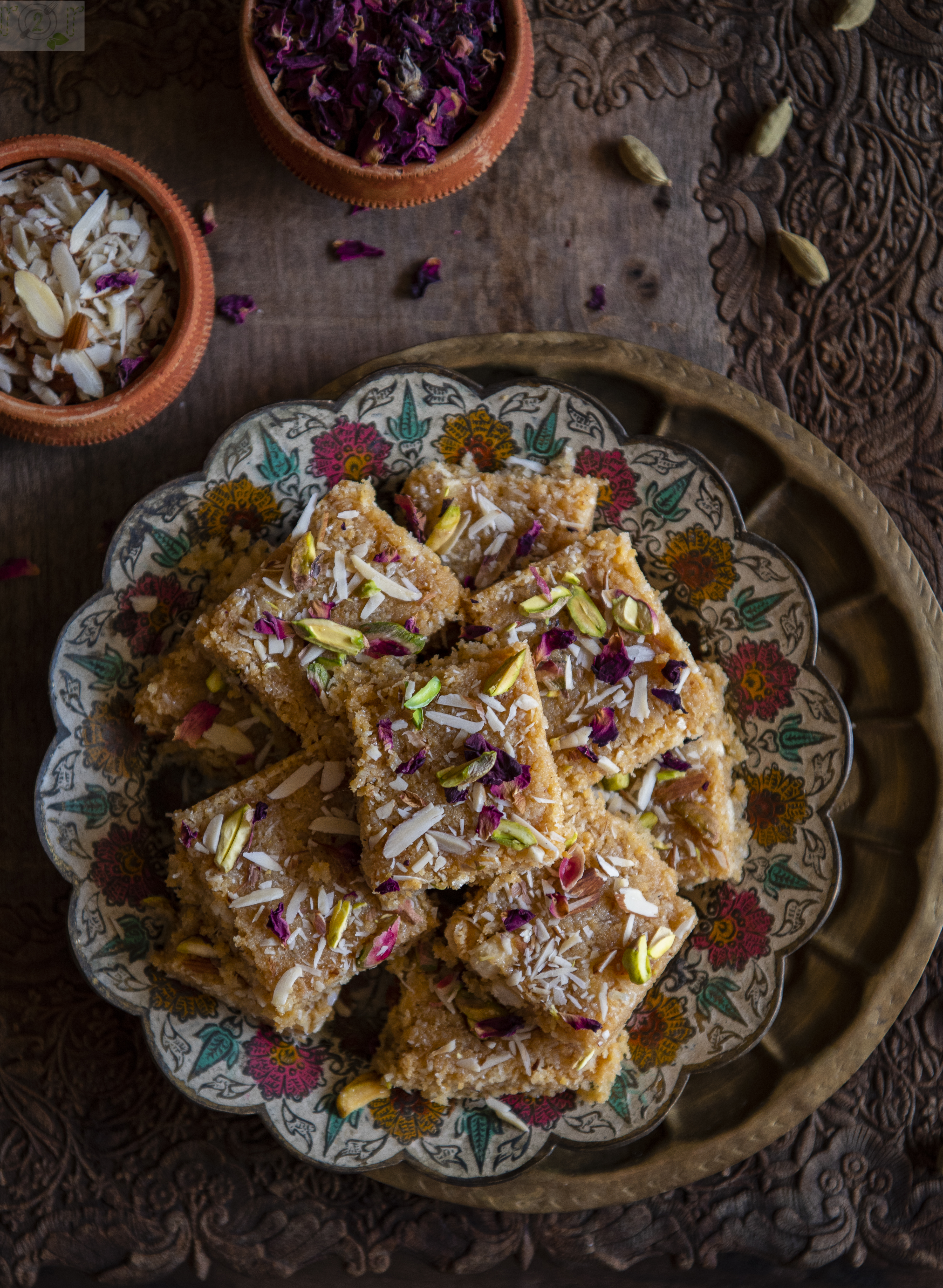
Khadim Pak
Ingredients
- 3 liters milk, full cream
- 1 cup fresh coconut, grated
- 1+1/2 cups sugar
- 1/4 cup cashews
- 1/4 cup raisins
- slivered almonds and pistachios to garnis
- dried rose petals to garnish
- 1-2 teaspoons ghee
Instructions
Take a heavy bottom pan, preferably non-stick kadai which has not been used for making dals or curries.
Add all the milk to it and boil it on medium to low flame untill it reaches shaggy dough like consistency.
Keep an eye on the milk and do not forget to keep stirring continuously. A silicon spatula works best to scrape of the sides of the kadai.
While the milk is boiling, grate the kopra and fry the cashews and raisins in ghee. Chop the cashews and keep aside.
Once the milk has turned into shaggy mawa add the sugar and grated coconut.
Mix well and continue to cook till the sugar has mixed well, its moisture has evaporated and the coconut is pale pink in color.
By the time the coconut has cooked well the entire dish will change to pale brown in color.
Add the cashews and raisins.
Turn of the flame and transfer the contents to a rectangle pan or a thali.
Spread evenly and sprinkle slivered almonds, pistachios and rose petals. Press gently with back of a katori or flat ladle.
Cut in to squares or diamonds once the Khadim Pak has cooled down a little.
As it cools the Khadim Pak will begin to firm up, separate the squares and place them on serving platter.
Notes
Take care not to make the mawa or mixture too dry or else the Khadim Pak will become chewy.

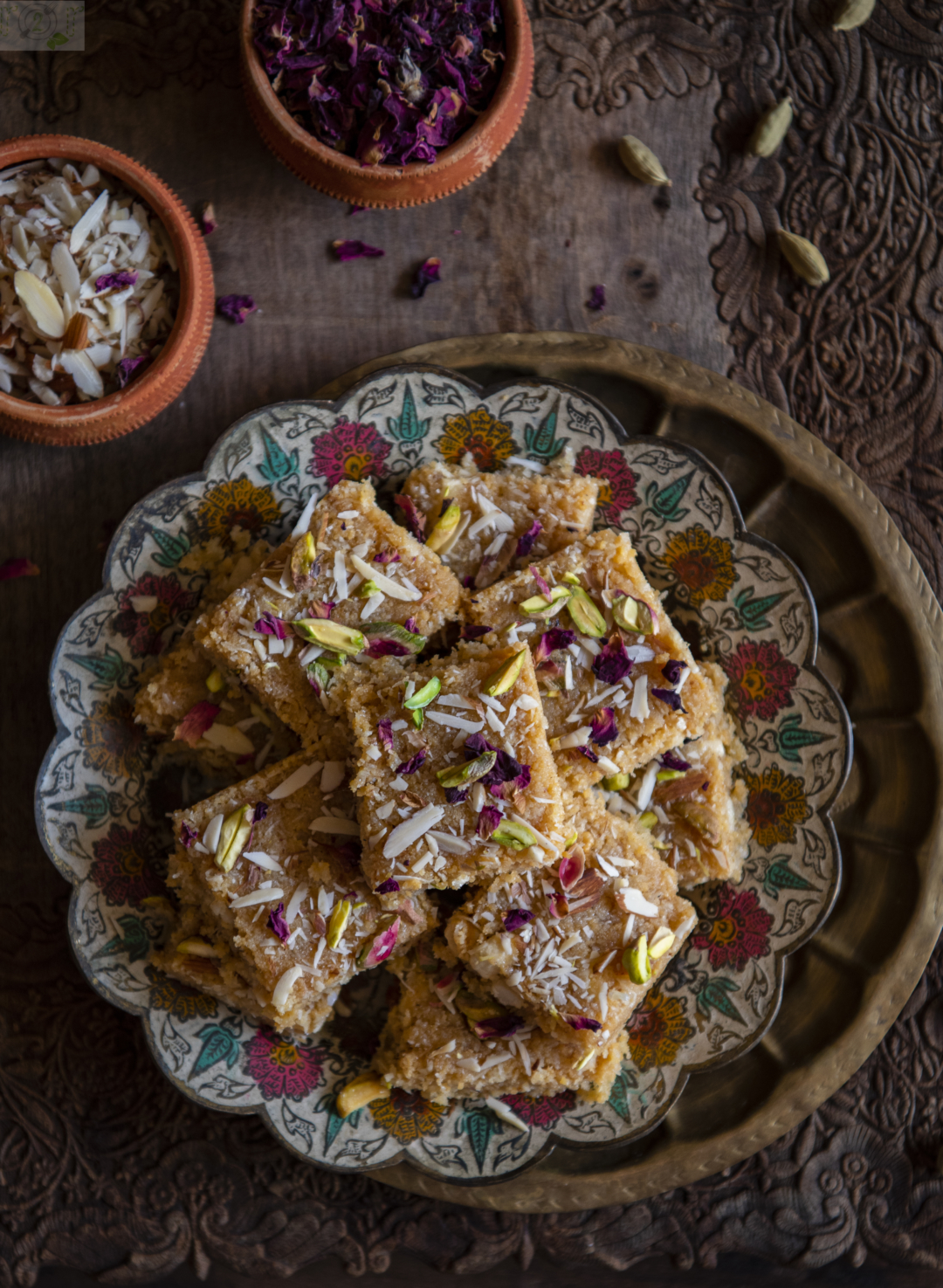

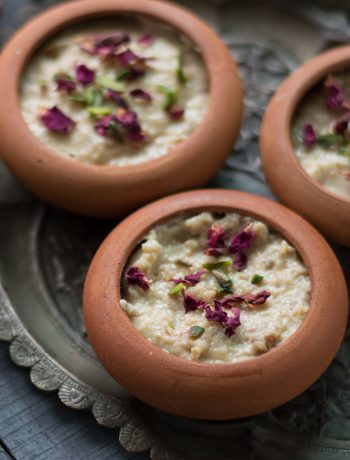
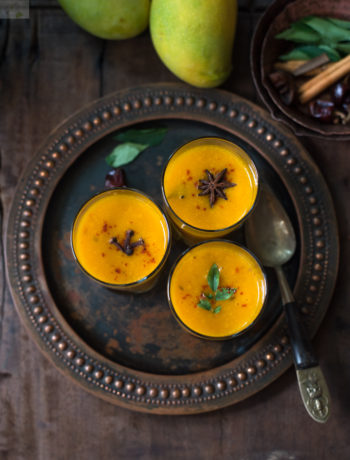
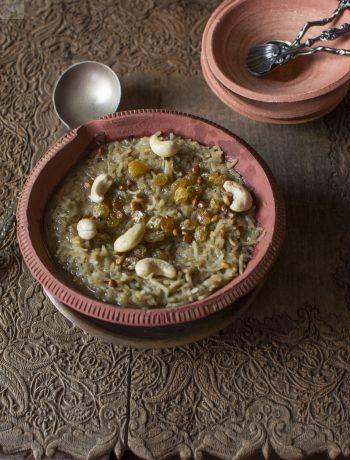
No Comments